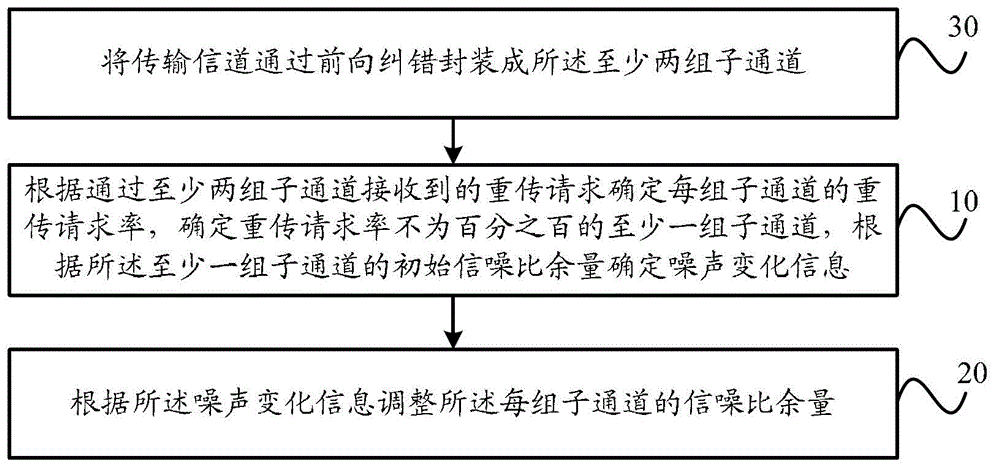Method and device for modulating and adjusting sending terminal and sending terminal
An adjustment method and adjustment device technology, applied in the direction of adjusting transmission rate, adjusting channel coding, digital transmission system, etc., can solve the problems of inaccurate SNR estimation, poor modulation adjustment effect, and inability to accurately reflect the change of noise, etc., to achieve Improve accuracy, improve the effect of transmission effect
- Summary
- Abstract
- Description
- Claims
- Application Information
AI Technical Summary
Problems solved by technology
Method used
Image
Examples
Embodiment Construction
[0051] In order to make the purpose, technical solutions and advantages of the embodiments of the present invention clearer, the technical solutions in the embodiments of the present invention will be clearly and completely described below in conjunction with the drawings in the embodiments of the present invention. Obviously, the described embodiments It is a part of embodiments of the present invention, but not all embodiments. Based on the embodiments of the present invention, all other embodiments obtained by persons of ordinary skill in the art without creative efforts fall within the protection scope of the present invention.
[0052] figure 1 It is a flow chart of a modulation adjustment method at a transmitting end provided by an embodiment of the present invention. Such as figure 1 As shown, the method for adjusting modulation at the sending end provided in this embodiment can be specifically applied to a process of dynamically adjusting modulation parameters of the...
PUM
 Login to View More
Login to View More Abstract
Description
Claims
Application Information
 Login to View More
Login to View More - R&D
- Intellectual Property
- Life Sciences
- Materials
- Tech Scout
- Unparalleled Data Quality
- Higher Quality Content
- 60% Fewer Hallucinations
Browse by: Latest US Patents, China's latest patents, Technical Efficacy Thesaurus, Application Domain, Technology Topic, Popular Technical Reports.
© 2025 PatSnap. All rights reserved.Legal|Privacy policy|Modern Slavery Act Transparency Statement|Sitemap|About US| Contact US: help@patsnap.com



